#d&d 4e
Explore tagged Tumblr posts
Text
Tactical Combat, Violence Dice and Missing Your Attacks in Gubat Banwa
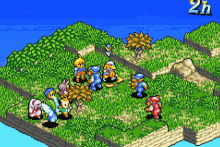
In this post I talk about game feel and decision points when it comes to the "To-Hit Roll" and the "Damage Roll" in relation to Gubat Banwa's design, the Violence Die.
Let's lay down some groundwork: this post assumes that the reader is familiar and has played with the D&D style of wargame combat common nowadays in TTRPGs, brought about no doubt by the market dominance of a game like D&D. It situates its arguments within that context, because much of new-school design makes these things mostly non-problems. (See: the paradigmatic shift required to play a Powered by the Apocalypse game, that completely changes how combat mechanics are interpreted).
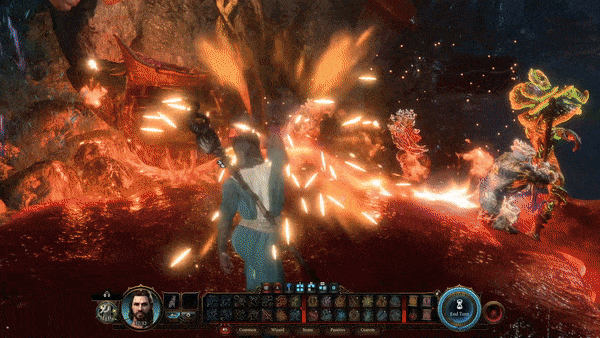
With that done, let's specify even more: D&D 5e and 4e are the forerunners of this kind of game--the tactical grid game that prefers a battlemat. 5e's absolute dominance means that there's a 90% chance that you have played the kind of combat I'll be referring to in this post. The one where you roll a d20, add the relevant modifiers, and try to roll equal to or higher than a Target Number to actually hit. Then when you do hit, you roll dice to deal damage. This has been the way of things since OD&D, and has been a staple of many TTRPG combat systems. It's easy to grasp, and has behemoth cultural momentum. Each 1 on a d20 is a 5% chance, so you can essentially do a d100 with smaller increments and thus easier math (smaller numbers are easier to math than larger numbers, generally).
This is how LANCER works, this is how ICON works, this is how SHADOW OF THE DEMON LORD works, this is how TRESPASSER works, this is how WYRDWOOD WAND works, this is how VALIANT QUEST works, etc. etc. It's a tried and true formula, every D&D player has a d20, it's emblematic of the hobby.
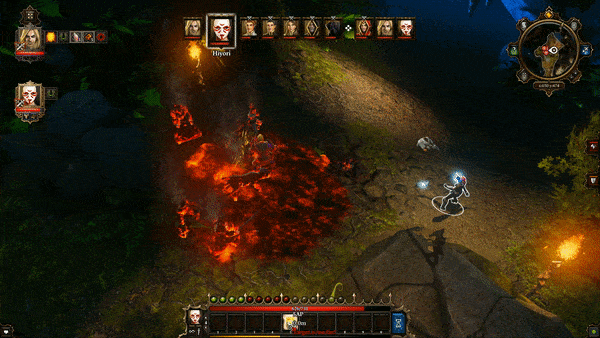
There's been a lot more critical discussion lately on D&D's conventions, especially due to the OGL. Many past D&D only people are branching out of the bubble and into the rest of the TTRPG hobby. It's not a new phenomenon--it's happened before. Back in the 2010s, when Apocalypse World came out while D&D was in its 4th Edition, grappling with Pathfinder. Grappling with its stringent GSL License (funny how circular this all is).
Anyway, all of that is just to put in the groundwork. My problem with D&D Violence (particularly, of the 3e, 4e, and 5e version) is that it's a violence that arises from "default fantasy". Default Fantasy is what comes to mind when you say fantasy: dragons, kings, medieval castles, knights, goblins, trolls. It's that fantasy cultivated by people who's played D&D and thus informs D&D. There is much to be said about the majority of this being an American Samsaric Cycle, and it being tied to the greater commodification agenda of Capitalism, but we won't go into that right now. Anyway, D&D Violence is boring. It thinks of fights in HITS and MISSES and DAMAGE PER SECOND.
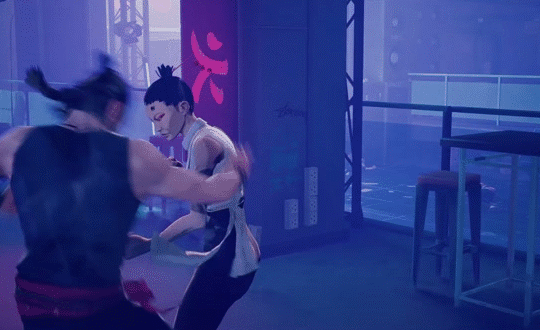
A Difference Of Paradigm and Philosophies
I believe this is because it stems from D&D still having one foot in the "grungy dungeon crawler" genre it wants to be and the "combat encounter balance MMO" it also wants to be. What ends up happening is that players play it like an immersive sim, finding ways to "cheese" encounters with spells, instead of interacting with the game as the fiction intended. This is exemplified in something like Baldur's Gate 3 for example: a lot of the strats that people love about it includes cheesing, shooting things before they have the chance to react, instead of doing an in-fiction brawl or fight to the death. It's a pragmatist way of approaching the game, and the mechanics of the game kind of reinforce it. People enjoy that approach, so that's good. I don't. Wuxia and Asian Martial Dramas aren't like that, for the most part.
It must be said that this is my paradigm: that the rules and mechanics of the game is what makes the fiction (that shared collective imagination that binds us, penetrates us) arise. A fiction that arises from a set of mechanics is dependent on those mechanics. There is no fiction that arises independently. This is why I commonly say that the mechanics are the narrative. Even if you try to play a game that completely ignores the rules--as is the case in many OSR games where rules elide--your fiction is still arising from shared cultural tropes, shared ideas, shared interests and consumed media.
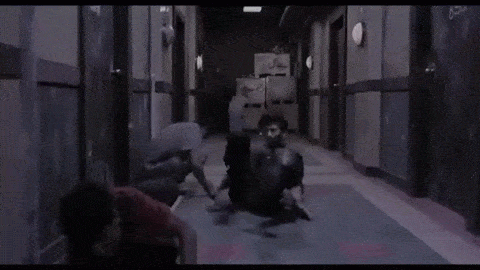
So for Gubat Banwa, the philosophy was this: when you spend a resource, something happens. This changes the entire battle state--thus changing the mechanics, thus changing the fiction. In a tactical game, very often, the mechanics are the fiction, barring the moments that you or your Umalagad (or both of you!) have honed creativity enough to take advantage of the fiction without mechanical crutches (ie., trying to justify that cold soup on the table can douse the flames on your Kadungganan if he runs across the table).
The other philosophy was this: we're designing fights that feel like kinetic high flying exchanges between fabled heroes and dirty fighters. In these genres, in these fictions, there was no "he attacked thrice, and one of these attacks missed". Every attack was a move forward.
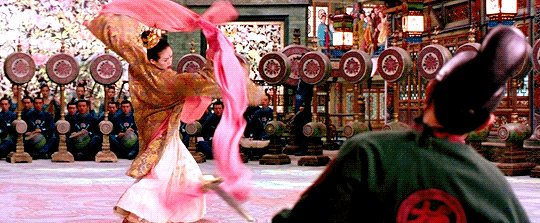
So Gubat Banwa removed itself from the To-Hit/Damage roll dichotomy. It sought to put itself outside of that paradigm, use game conventions and cultural rituals that exist outside of the current West-dominated space. For combat, I looked to Japanese RPGs for mechanical inspiration: in FINAL FANTASY TACTICS and TACTICS OGRE, missing was rare, and when you did miss it was because you didn't take advantage of your battlefield positioning or was using a kind of weapon that didn't work well against the target's armor. It existed as a fail state to encourage positioning and movement. In wuxia and silat films, fighters are constantly running across the environment and battlefield, trying to find good positioning so that they're not overwhelmed or so that they could have a hand up against the target.
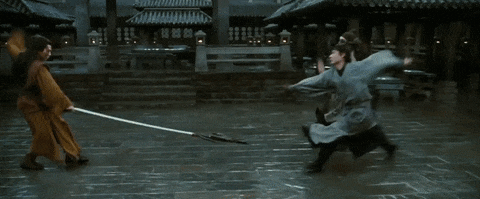
The Violence Die: the Visceral Attacking Roll
Gubat Banwa has THE VIOLENCE DIE: this is the initial die or dice that you roll as part of a specific offensive technique.

In the above example, the Inflict Violence that belongs to the HEAVENSPEAR Discipline, the d8 is the Violence Die. When you roll this die, it can be modified by effects that affect the Violence Die specifically. This becomes an accuracy effect: the more accurate your attack, the more damage you deal against your target's Posture. Mas asintado, mas mapinsala.

You compare your Violence Die roll to your target's EVADE [EVD]. If you rolled equal to or lower than the target's EVD, they avoid that attack completely. There: we keep the tacticality of having to make sure your attack doesn't miss, but also EVD values are very low: often they're just 1, or 2. 4 is very often the highest it can go, and that's with significant investment.
If you rolled higher than that? Then you ignore EVD completely. If you rolled a 3 and the target's EVD was 2, then you deal 3 DMG + relevant modifiers to the DMG. When I wrote this, I had no conception of "removing the To-Hit Roll" or "Just rolling Damage Dice". To me this was the ATTACK, and all attacks wore down your target's capacity to defend themselves until they're completely open to a significant wound. In most fights, a single wound is more than enough to spell certain doom and put you out of the fight, which is the most important distinction here.
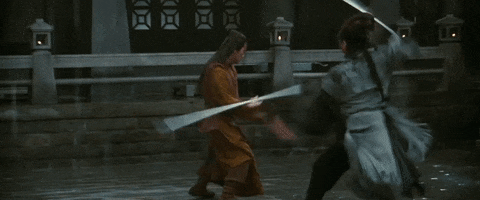
In the Thundering Spear example, that targets PARRY [PAR], representing it being blocked by physical means of acuity and quickness. Any damage brought about by the attack is directly reduced by the target's PAR. A means for the target to stay in the fight, actively defending.
But if the attack isn't outright EVADED, then they still suffer its effects. So the target of a Thundering Spear might have reduced the damage of an attack to just 1 (1 is minimum damage), they would still be thrown up to 3 tiles away. It matches that sort of, anime combat thing: they strike Goku, but Goku is still flung back. The game keeps going, the fight keeps going.
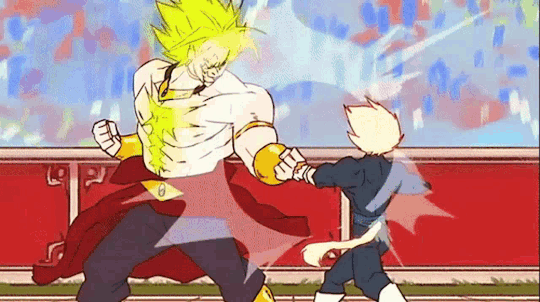
On Mechanical Weight
When you miss, the mechanical complexity immediately stops--if you miss, you don't do anything else. Move on. To the next Beat, the next Riff, the next Resound, think about where you could go to better your chances next time.
Otherwise, the attack's other parts are a lot more mechanically involved. If you don't miss: roll add your Attacking Prowess, add extra dice from buffs, roll an extra amount of dice representing battlefield positioning or perhaps other attacks you make, apply the effects of your attack, the statuses connected to your attack. It keeps going, and missing is rare, especially once you've learned the systematic intricacies of Gubat Banwa's THUNDERING TACTICS BATTLE SYSTEM.
So there was a lot of setup in the beginning of this post just to sort of contextualize what I was trying to say here. Gubat Banwa inherently arises from those traditions--as a 4e fan, I would be remiss to ignore that. However, the conclusion I wanted to come up to here is the fact that Gubat Banwa tries to step outside of the many conventions of that design due to that design inherently servicing the deliverance of a specific kind of combat fiction, one that isn't 100% conducive to the constantly exchanging attacks that Gubat Banwa tries to make arise in the imagination.
#gubat banwa#ttrpg#filipino#fantasy#gamedev#writing#rpg#dnd#southeast asia#d&d#d&d 5e#d&d 4e#i will say#that part of the decision away from a d20 (because gb alpha used one)#is sheer hater energy on my part#like i just didn't want to#because its used by all these other games by white people and especially because its used by dnd#there is like#4 instances where you use d20s in this game
229 notes
·
View notes
Text




Mini for a buddy in my d&d 4e game, the turkey feathers were a fun little challenge
22 notes
·
View notes
Text
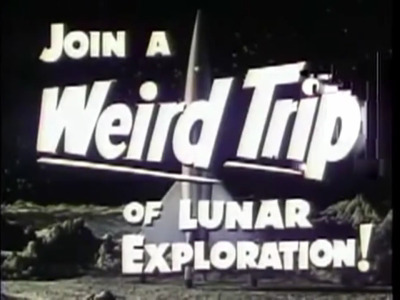
The Void Saga on Critical Hit
From: https://www.tumblr.com/el-tlatoani-de-barrio/778036304244031488
15 notes
·
View notes
Text
4e's "Heroes of the Fallen Lands" contains a bit of text in the wizard section whose wider implications I do not believe were fully considered.

You heard it here first! (Several years after publication!) In 4e D&D, it is assumed that wizard apprentices regularly brainwash both their teachers and each other.
31 notes
·
View notes
Text






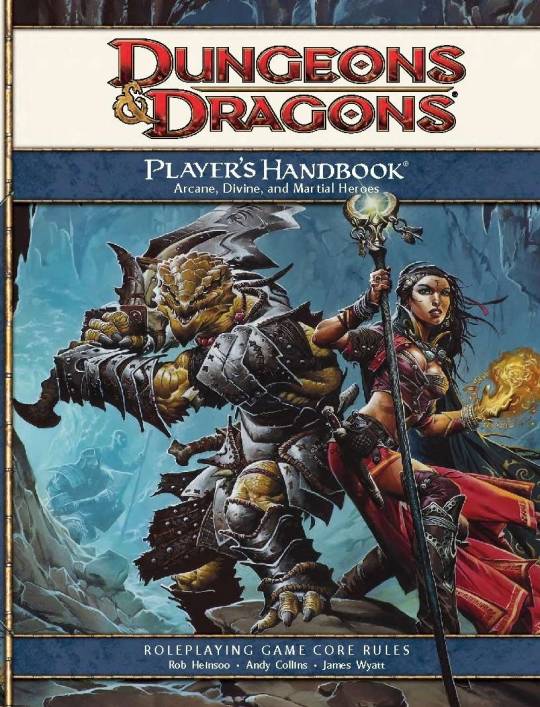

#dungeons and dragons#ttrpg#rpgs#dungeonsanddragons#d&d#thoughts#tumblr polls#my polls#polls#poll time#dnd#dnd5e#dungeons & dragons#od&d#D&D basic set#Basic D&D#ad&d#1e#ad&d 2e#advanced dungeons & dragons#d&d 2e#d&d 3.5#D&D 3e#d&d 4e#d&d 5e#d&d 5th edition#adnd#poll#random polls#tumblr poll
16 notes
·
View notes
Text
do you ever homebrew a bit too much to the point that the game turns into basements and lizards?
#am i a bad dm? yes#but! *stares at the handbooks* i ain't reading all that#dnd#d&d#d&d memes#dnd memes#dungeons and dragons#ad&d 2e#dnd 5e homebrew#dnd 4e#dnd 5e#d&d 4e#d&d 5e
13 notes
·
View notes
Text
#dungeons and dragons polls#dungeons and dragons#old school d&d#d&d#dnd#ad&d 1e#dnd1e#ad&d 2e#dnd2e#d&d 3.5#dnd 3e#dnd 3.5#d&d 4e#dnd 4e#d&d 5th edition#d&d 5e#dnd5e#dnd 5th edition#osr#old school renaissance#ttrpg#ad&d#ttrpg community#d&d polls#dnd poll#ttrpg polls#fantasy rpg#rpg
22 notes
·
View notes
Text
whenever someone complaints abt a ttrpg being 'gamey' the standard response is "well what did you expect?? you're playing a game, dipshit". but i think by 'gamey' the actual criticism being made is that it feels artificial
5e's always felt gamey to me because of the annoying obligation to balance encounters and an adventuring day. you need to have enough encounters to drain the wizard's resources, they need to walk a tightrope between challenging the PCs and not TPK-ing them, etc etc.
and everyone talks about how hard this is on the GM with the limited tools 5e gives you (which it is) but it also has the unrelated effect of feeling extremely forced from a player-side. the illusion of a consistent world starts to slip because what the PCs encounter has to revolve around the PCs for the game to work.
also i've been seeing a lot of 4e defending on my dash lately and like, yes it's a good game that's very good at the thing it chooses to do. but the criticism that 4e feels gamey (read: artificial) is extremely valid; the strict separation between combat and non-combat results in all flavor basically being only flavor
there's a 4e paragon path you can take called the Entrancing Mystic, whose powers have flavor text describing how you bewitch and ensnare the minds of your enemies. what do the powers actually do? some forced movement in the combat boardgame. what happens if you use them out of combat? who knows! they certainly weren't designed to be used that way, because their actual effect is measured only in terms of the combat boardgame
obviously there's a lot of aspects of non-4e D&D and similar games that are unrealistic. hit points are not how being stabbed works. but certain gamisms bother me more bc they create a clear disconnect between the fiction and the mechanics in a more tangible way.
like, 13th age's resting system (great game but i wanna pick on it here) has you fully heal every 3 or 4 encounters. only had one encounter? no full heal-up, even if you're resting. you have had four encounters? you get a full heal-up. there's a halfhearted sidebar about how the GM should contrive a reason for the heal-up to happen.
as a game balance mechanic, it's great! but i despise it because it's so disconnected from the reality of the game world. HP and fully healing on a rest isn't realistic, but it's an abstract representation of something that happens in the fiction. take a rest -> fully heal is unrealistic but internally consistent with the game world. 13th age healing is not - the in-universe characters can never acknowledge it as it makes no in-world sense.
anyway the reason i'm grumpy abt this lately is the MCDM game has a taunt mechanic that's just straight-up called taunting and it irks me so so bad. again, great game, super fun, but taunting leads to so many situations where an NPC does stuff they wouldn't do
y'know, like a videogame! where the dialogue and personality is just a skin over a set of game mechanics. and when NPCs start behaving out of character with no in-world justification (cause taunts aren't mind control ofc, it's just a guy... taunting you) they feel gamey. artificial.
i like all of the games i brought up (except probably 5e) but i had to get that out of my system thanks for coming to my ted talk
46 notes
·
View notes
Text
Every now and then I see the Capitalism Ruined Tieflings post float past and my brain just goes "Skill Issue."
For context, this is a popular post that states that in D&D's second and third editions, Tieflings had a huge variety of appearances and then in 4e they were homogenised into generic devil-people because Hasbro was calling the shots and demanded that Tieflings all look relatively the same because that way it was easier to sell minis of them, and now Tieflings are ruined forever because you can't make one with greasy skin that smells like farts.
But here's the thing: You can absolutely still just do that.
"But the book says-"
Fuck the book! This hobby is 50% improv and the highest authority you'll ever have to deal with is most likely going to be your friend Jim, when it comes to pure roleplay things, there is literally nothing stopping you. The D&D Police aren't going to kick down your door and haul you off to RPG Jail for the crime of not playing a Tiefling like they're described in the PHB, because there is no D&D Police.
The PHB is great for telling you what you get mechanically (or the "crunch") and can be entirely ignored for everything in terms of lore (or the "fluff").
I've been playing 5e for something like seven or eight years now, and during that time, across all those groups, we've used vanishingly small amounts of official lore, one official setting, and precisely zero Hasbro miniatures (largely because all of those games have been online).
If I had gone to any of those DMs, both the good and bad ones, and said "I wanna use the Planescape Tiefling tables for my character's appearance", I don't think any of them would've said no. Now, that's not something I personally would ever do (I'm not leaving my character's design up to the RNG that hates me), but I don't doubt that the option would exist if I wanted it.
Additionally, people have always broken from the official limitations of the books with these things, and a few really obvious ways.
Per the books, Tieflings have the full range of human skin tones, plus varying shades of red. Now, how many people actually keep to that limitation? I've seen blue, purple, orange, green, yellow, bone white, grey, black, pink, etcetera. Even the Planescape table only gives you red, green, and blue, random 5e players going "What if it was purple!" and disregarding the PHB is fully and openly accepted.
Hell, two of the most prominent Tiefling characters in the current era of D&D are Jester and Molly from CritRole's second campaign, who are blue and purple respectively. "Tieflings are just red" says Hasbro, and "No they aren't" says literally everybody else. Even Hasbro themselves don't care too much about it, there's an official Lego D&D Tiefling minifigure coming out this year, and they're orange, not red, when Hasbro could easily have demanded that Lego make them red.
Additionally, the book says Tiefling eyes are a single, solid colour, with no visible iris, pupil, or sclera. Yeah that one gets ignored a whole lot too. In fact, that one gets ignored more than it gets followed. I've made at least ten of these fuckers and one of them followed that rule, and only did so after her Sorcerer bloodline activated, and nobody, DM or player, has ever called me out on it.
The book says nothing about them having weird legs, I've still seen plenty with varying forms of digitigrade gait, whether it's with hooves or something else at the end of them.
If you want to make your Planescape Tieflings, then you absolutely still can. And if your DM says no, then they're probably just still in their Rules Stickler phase. Give 'em a little time and they'll loosen up, it happened to most people in this hobby.
That's the great thing about playing D&D. Most of the time, you really can just do whatever the hell you like as long as it doesn't futz with the mechanical side of things (and sometimes you can do it with that too).
Capitalism didn't ruin Tieflings. Sure, you can argue that it tried, but the only thing letting it succeed is a lack of imagination and an unwillingness to go "Hey, can I just do X instead" on the part of the players.
Now, if you'll excuse me, I'm gonna go make a character that's mechanically a Tiefling and lore-wise a completely different species, because nothing can stop me doing that.
26 notes
·
View notes
Text
"D&D 4e was so difficult to design for!"
Skill issue.
33 notes
·
View notes
Text
youtube
9 notes
·
View notes
Text
Forever DM thoughts
Some of my ttrpg players give me feedback that makes me smile, like how much they enjoy the cool new item I gave them or how they liked the way I handled combat.
Some of my players make me feel evil but in a good way by stuff like this: "I liked, in that it made me feel things, that the dryad was crying when we came back. That sucked. I felt so bad."
It's never my intention to make my players feel bad, but as an actor on the side, I do love being able to evoke visceral emotions. I once made an old acting buddy cry with my performance, and it was a moment of triumph.
So I guess we'll see if I make my players laugh, cry, or swear in the next session. 😈 Evil DM thoughts a-brewing.
4 notes
·
View notes
Note
I started listening to critical hit when I was pretty young (maybe 13 or 14? Don't recall exactly when, before 5e and during the second term of the Obama presidency if that helps), and it really got me into ttrpgs in a big way - I bought *so* many secondhand 4e books. After a few years, I kinda fell out of listening to it and carried on with my life, still maintaining ttrpgs as my primary hobby space. Recently I've revisited 4e (hoping to run it with my group after our lancer campaign wraps up) and the podcast as well, which led me to this blog. Something I've always said about 4e is that it's the only edition of dnd to be really honest and up front about mechanically centering combat - 3.5 and 5 both do as well, but seem a little embarrassed about it an unwilling to commit to the idea. Revisting 4 though, I think I may have been mistaken. Writing from the designers (ex, the example characters they present in "4th edition for dummies") and some elements of the PHB make me believe that they, on some level, still were trying to do the "three pillars" thing mechanically. For example, having utility powers that are either only usable in combat or only usable out of combat as well as utility powers that could theoretically be used in either case (see PHB Warlock level 12 utilities) seems like a kind of weird design choice, like having those parts of the game compete for the same character resources strike me kinda weirdly. Curious if you have any thoughts on this.
I think you’re right, but you’re looking at it at an angle. 4e was the first (and maybe last) time that WotC’s D&D was honest about its focus on combat, and that allowed them to create a tight, robust system that could then be extrapolated into hundreds of combinations. Part of that focus is seen in player options emphasizing choice and mechanical impact.
These twin ideas mean that on level up, when given a choice, the player can choose one of many options, and that option will be mechanically impactful. Now, 4e existed for a long time and, especially if you were picking up the digital magazines you could argue that these ideas were not always at the forefront, but as far as the printed material, choice and mechanical impact were always important, even if the execution wasn’t always successful.
The extension of these ideas out of the realm of combat is reflected in 4th edition’s skill challenges. Same idea, choice and mechanical impact, hence feats and powers that care about skill rolls. Now, folks around here know that RAW skill challenges were, pun intended, a little undercooked; which is why I wrote up the Lord Kensington rules. If you continue to listen to The Void Saga on Critical Hit you may notice that my skill challenges are both tough and impactful, adding this pressure motivates players to get better at skill challenges. By the end of the game most, if not all PCs had one (or more) flat skill bonus feats. Many had, as you point out, chosen to forego potential combat bonuses for something that kept them from crashing and burning on skill challenges.

Run son! It’s time for a skill challenge!
So yeah, tldr 4e’s crew tried to extend their design philosophy to the other two pillars in the form of skill challenges, but clearly it didn’t receive the same amount of time as combat. But also that’s ok, because I fixed it for them.
Thanks for listening and thanks for writing in!
#questiontime#critical hit#critical hit podcast#dungeons & dragons#d&d 4e#4th edition#dnd 4e#void saga#skill challenge
12 notes
·
View notes
Text
4e Project 0: Let's Talk About Worms
Alright, hopefully my players have blocked the tag. With that done, this is the first *real* post in my series of records and thoughts as I try to convert a long-form 3.5e D&D campaign to 4th edition. In this post, I want to talk about the campaign itself and provide some background info - a kind of overview before we get into the nitty gritty. Going forward, I'm going to have main posts that go in depth on the conversion process for each individual adventure, with some smaller posts (called "worm food" in the tradition of the campaign) containing thoughts about what the process is reaching me in regards to philosophical differences between editions, game design, etc; or just like individual parts of an adventure that I find especially interesting. There'll be a table of contents post here. Now, let's talk a bit about the campaign I'm trying to convert: The Age of Worms. At the risk of doing an xkcd's comic abt quartz here, I'd say AoW is one of the more famous prewritten campaigns to come out during D&D's 3.5 era, it's one you hear a lot of discussion about on forums and already has a fanmade conversion to 5e (which I'll be using as a reference point throughout my project). The campaign path consists of 12 separate adventures, all published serially in Dungeon magazine between 2005 and 2006. Each adventure was designed for a 4-character party and was intended to elevate the party by a level or two, taking them from level 1 all the way to 20 - this is a serious ass long-term campaign. The plot ramps up pretty decently from standard low-level shenanigans (the stated motivation for the party in the first adventure is literally the classic 'raid tombs get money'), to being heavily focused on stopping the return of a horrific eldritch-horror-undead demigod (Kyuss, who's been lurking in the background of various D&D books since like AD&D) about halfway through. It's apparently notorious for being pretty deadly as well, and I certainly believe it. Adventure 1: The Whispering Cairn
It's kind of odd by the standards of modern prewritten adventure design, but this campaign starts off with a classic dungeon crawl in search of treasure. It opens up into a more interesting quest afterwards, trying to find a ghost child's bones in order to get to the dungeon's real treasure, which will lead them into their first hints of the coming undead worm problem. A lot of the traps here are really nasty, and the dungeon is pretty combat-dense; also I can envision some parties getting pretty annoyed with being sent off on this crazy chase just to finish up a dungeon; but overall I'm a fan of this adventure. 1.5: Diamond Lake
There's a lot of info on this shithole mining town that the PCs start off in, with tons of cool locations and interesting NPCs, to the point where I feel like an AoW campaign would be incomplete without the DM adding at least some plotline with the party getting wrapped up in the local power struggle between mine owners. Fortunately, this won't be a problem for me, as my group will almost certainly try to start unionizing the minors and upending the town's power structure ASAP. The fact that the campaign seems to expect player groups to be basically fine with how shit the town is is definitely a mark of how the "default" game has changed.
2: The Three Faces of Evil
Usually recognized as "the shitty one", this adventure is pretty much entirely a big dungeon crawl. It's super lethal, the connective tissue between it and the first adventure is weak as hell, and frankly I find the whole "three faces" cult and its relation to Kyuss to be a bit bizarre, like in a weird misdirect-villain way. Also the text is full of typoes and some maps are labelled badly. Of all the adventures, this one is the one I suspect I'll be altering the most. 3: Encounter at Blackwall Keep The first of many "go talk to a wizard about this wacky shit" hooks, Blackwall Keep has a fine adventure trapped in it somewhere (that adventure is mostly 1982's 'Danger at Dunwater'). The players fight off lizardfolk raiding a frontier keep and then track them to their lair to rescue a wizard they need to talk to about clues uncovered in Three Faces. The fact that the adventure really wants them to kill the lizardfolk does not read well today, it's definitely reflective of the more morally ambiguous character of the default adventurer back in the day. The "villain" of this one is literally an escaped arena slave lizardfolk, no offense but I doubt my group will be killing him. It does a good job really setting up that this whole worm thing is becoming more of a problem though, and the initial siege fight of fighting the lizardfolk could be fun. Plenty to talk about with this one. 4. The Hall of Harsh Reflections Another "talk to a wizard" hook, this adventure takes the PCs to the Big City (Greyhawk by default, but could be whatever)! This is kinda neat, taking them from po-dunk Diamond Lake to the city is a good representation of escalation. Really, this is the first part of a 2-adventure arc, and has some genuinely neat intrigue elements involving doppelgangers impersonating the PCs to commit crimes, a hidden mind flayer overlord, and ending on the best cliffhanger/forboding note yet. I suspect I'll have to make very few changes to the actual storyline of this one.
5. The Champion's Belt *Fuck* yeah. Cool ass tournament arc where the parties are also trying to stop an evil cultist plot to kill the audience and raise them as undead (very reminiscent of that one bit of the dnd movie). All kinds of neat gladiator shit, opportunities to meet and roleplay with other adventurers, a dungeon crawl through the hidden halls of the under-arena, and an iconic final fight against an Ulgurstasta. The dungeon bit is pretty long, and I think there'll be some interesting challenges in adapting the Ulgurstasta. 5.5. The Free City
Like Diamond Lake, this is a big background section about the Free City (again, Greyhawk by default). This is helpful, but I like it less than Diamond Lake just bc the connection isn't there. The PCs should for sure have an opportunity to have a Big City Caper(tm) here, likely between adventures 5 and 6. 6. A Gathering of Winds Fuck that title, this is Return to the Whispering Cairn baby! This gimmick of going back to where you started to do new shit gets me hype every time. This adventure also gets points from me for having A FUCKING DRAGON FIGHT! HELL YEAH! (for now, these will get much less cool and special later on). As written, the dragon devastates Diamond Lake before the PCs arrive, and I like that - especially if they took time between adventures to work on making the town better (which mine certainly will), it feels devastating and adds a personal stake to the adventure. This one also has a long ass dungeon crawl (making use of both Ds is always nice), and feels like a fitting send-off to the more episodic early parts of the campaign. From here on, it's all kyuss all the time, baby.
7. The Spire of Long Shadows. There's some wack-ass shit in this one. Spire is the big lore-dump adventure, where the PCs learn about Kyuss and his backstory and whatnot - and the dungeon crawl through his ruined city to get it has some very neat survival horror potential. Outside of talking with a wizard (yes! it's the third 'talk to a wizard' hook!) at the start, there is very little non-dungeon crawling combat content here, which is fine but will present a challenge to 4e-ifying it without murdering the pacing. Also, there's a weird inclusion about a Pit Fiend who wants an artifact that the PCs found in the last adventure but who is never mentioned again and has no connection to Kyuss - might be cool, I guess, but just seems strange. Finally, this adventure sets the PCs on the trail of Kyuss's cult all the way to [next location].
8. The Prince of Redhand FORMAL BANQUET, YEAH BITCH! I FUCKING LOVE NOBLE PARTY ARCS!! After a great deal of dungeon-crawling, Prince of Redhand is a pretty welcome diversion into the realm of intrigue and heavy roleplay. The vibes are fucking rancid, which is exactly what you want for this tense intrigue story. Any more will have to wait until the detailed writeup, but this adventure might be my favourite of the lot.
8.5. Alhaster Another area writeup, this one's really great! Less shenanigans for the PCs to get into between adventures (which makes sense as the plot has ramped the fuck up), but does a great job detailing the town and creating an atmosphere of like, I dunno, New England creepy oldness? Also there's a scary evil angel of Hextor here who fully activates my switch reflexes.
9. The Library of Last Resort 🎵It's the Mystery of the Druids, they all have an attitude🎵 Much in the vein of Spire, the PCs talk to an expert and then go off in search of secret knowledge - in this case knowledge of Kyuss's great lieutenant's (the dracolich Dragotha, allegedly the first dracolich) phylactery. They travel to a hidden island with an ancient druidic library, undergo trials to impress the library's fey wardens and access it, and then trip balls to discover the phylactery's location. It ends with a kind of neat idea that because the knowledge is no longer sealed up in the library, it's back in the world again and Dragotha will be able to remember it soon, setting off a bit of a race. Pretty cool - also, the Hand of Vecna is here, which is fucking sweet.
10. Kings of the Rift Oh boy, this is one hell of a dungeon crawl. Now, to be fair, the PCs aren't really expected to do all of it, and it's also fucking sick. They're caught in the middle of a battle between a city of giants (where the phylactery is) and a flight of dragons sent by dragotha to go and get said phylacery. It reminds me a little of the one part of dark souls 2 where you witness the giants invade Drangleic. We get some reoccuring NPCs here, and the fact that you don't have to fight the giants is pretty cool - I'm excited to dig deeper into this one.
11. Into the Wormcrawl Fissure Here it is - the dungeon crawl to end all dungeon crawls (at least as far as AoW is concerned). With his phylactery destroyed, all that remains to the PCs in preventing Kyuss's rise (as far as they know) is destroying Dragotha in his lair. Unfortunately, his lair is an eldritch realm nightmare death-zone infested with his subordinate dragons, undead worms, and a ton of disgusting terrors. It follows the same trend that several dungeons so far have (go around and find several parts of a thing to advance), but does it in a kind of new way - Dragotha is a terrifying boss fight and a great capstone to a really nasty dungeon. It ends, of course, with the knowledge that one of their benefactors betrayed them and Kyuss is going to rise over Alhaster etc etc - it's one hell of a lead up to the finale.
12. Dawn of a New Age. Man, this one would be hell to run in 3.5. As the world falls to madness around the PCs, they desperately try to stop Kyuss's emergence in Alhaster (I guess it makes sense in the story, but I almost would have liked to go back to Diamond Lake). There's some very dangerous encounters here, and two pretty funny details - 1, that it's still formatted like an AoW dungeon in that the party has to do three side objectives before the finale, and 2, they have the opportunity to travel to the actual factual Tomb of fucking Horrors in order to hijack that sphere of annihilation in the first room for use against Kyuss. Is this fucking rad or wack ass fanservice? I don't know. The ending post-Kyuss is cool. I like it a lot.
Hoo boy, big post. Probably mostly useful for reference, and it's worth noting I'm more familiar with the early adventures at this stage. There's definitely stuff to pick at and change here, and the campaign's heavy reliance on dungeon crawls (or perhaps, the fact that that's notable) is a neat indicator of game philosophy gone past for D&D. I'm gonna have my work cut out for me porting all this for sure. Excited to get more into Part 1: The Whispering Cairn! My first post there is going to cover the Cairn itself, with the one one after that going into the conversion process for encounters!
#dnd#dnd 4e#dnd5e#dnd 3.5#paizo#dungeons and dragons#dungeon master#d&d#d&d 5e#d&d 4e#project log#gorilla straylight's 4e garbage#age of worms#d&d conversion#prewritten campaign#fuck this is a long post#do I even like dungeon crawls?#is this a mistake? who knows#ttrpg#tabletop roleplaying#rpg
5 notes
·
View notes
Text
So I ran a Pathfinder 2E campaign from level 1 to 10, I'm running Kingmaker 2E for some parts of the same group, I'm more familiar soul D&D 5E than I think I'd like, I ran 13th Age back in 2015-2017/18. I've had fun with all these things by and large (how much of that is group versus system? *eh*) but I just keep thinking, "I miss 4E" or "I love 4E" or "Wouldn't this player love to run a Warlord?" So that's where I'm at in my D20 Fantasy Adventure Games rumination. Wanna pitch some 4E Dark Sun still. Some day. I hope.
7 notes
·
View notes
Text
D&D and Pathfinder RPers tell me what you think.
#pathfinder#pathfinder 2e#pathfinder 1e#pathfinder monsters#dungeons and dragons 3.5#dungeons and dragons 3.0#Dungeons and Dragons 1e#Dungeons and Dragons 2e#Dungeons and Dragons 4e#Dungeons and Dragons 5e#D&D#advanced dungeons and dragons#d&d monster#d&d 5e#d&d 3.5#d&d homebrew#D&D 1e#D&D 2e#D&D 3.0#D&D 4e#hags
5 notes
·
View notes